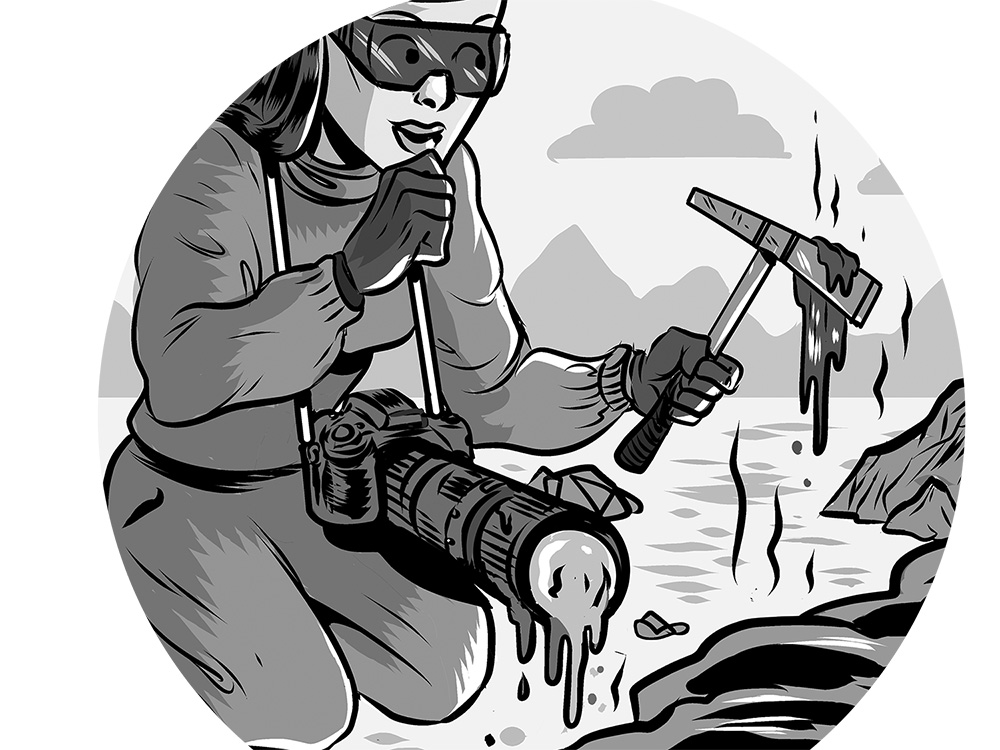


↑ Jessica Johnson, Geophysics researcher at the University of East Anglia
Most of a volcano’s activity happens below the surface—but we can still learn so much by collecting samples from the lava that emerges. It comes out at around 1800°F; you might stand a yard away and feel fine, but inch any closer, and the heat overwhelms you. Once, as I stood at the edge of a crater at Hawaii’s Kilauea volcano, my camera started melting. As soon as I took a few steps back, everything cooled off—the camera still worked!
When I took samples, I’d always wear Kevlar gloves, and often a protective suit. First, I‘d scoop up a glob of lava—it’s surprisingly sticky, like thick toffee—with a steel tool called a rock hammer. Then I’d drop the sample into a bucket of water, cooling it to prevent gas from escaping and changing its chemical makeup. Because different gases seep from the ground at different depths, lava’s composition tells us where it came from and how long it lurked below the surface.
As told to Claire Maldarelli
This article was originally published in the Winter 2018 Danger issue of Popular Science.

